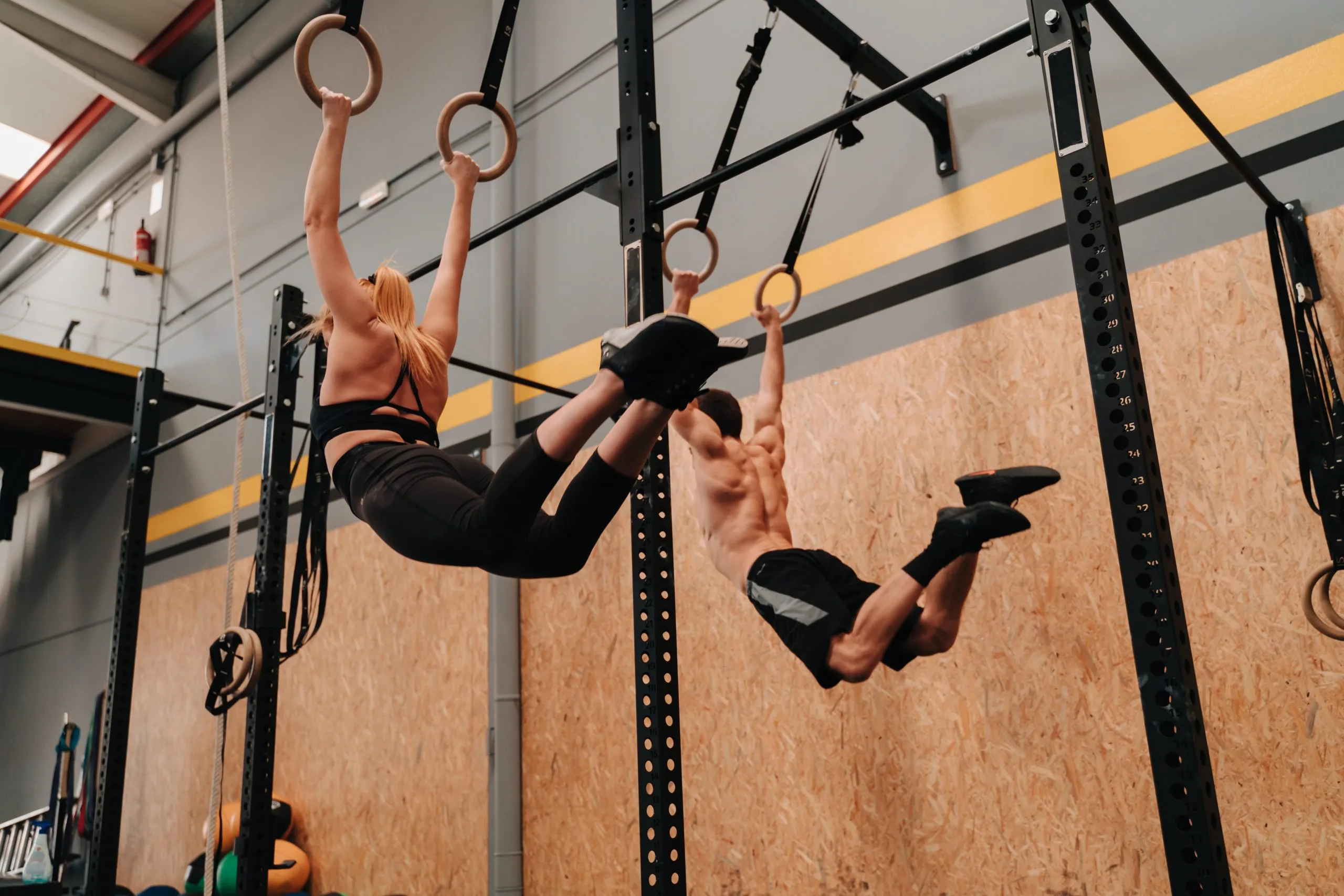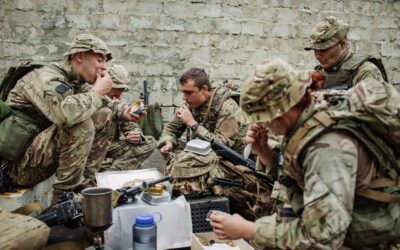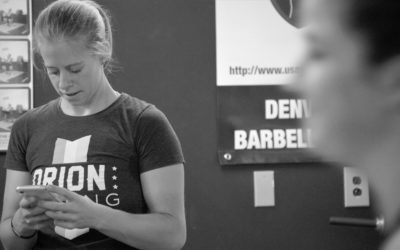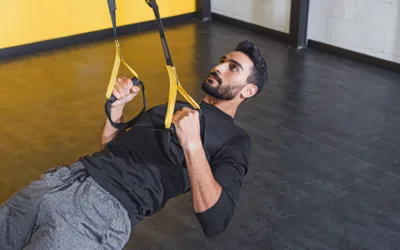10 Ways to Build an Unstoppable Engine for Competitive CrossFit

Written By
Todd Nief
Todd Nief is the Owner and Director of Training at South Loop Strength and Conditioning. He blogs regularly on all things strength and conditioning at southloopsc.com/articles.
To succeed in CrossFit, you need the ability to repeat near maximum efforts with as little rest as possible. It’s not enough to simply have a high one rep max or a large unbroken set of muscle-ups. How many reps at 90% of your max power clean can you do in 8 minutes?
If you do two AMRAP sets of muscle-ups in a row with 90s rest between the two, what percentage of your first set can you get on your second?
Athletes with inferior 1RM or AMRAP numbers – but with much better repeatability – tend to outperform their overly strong and explosive counterparts in CrossFit competition. Why is that? Their “repeatability” is much higher, and that’s often much more important for performance.

We’ve got a few traits we’re looking to train here:
- The percentage of 1RM of barbell lifts that an athlete can perform working sets with
- The percentage of AMRAP gymnastics sets that an athlete can perform working sets with
- Reduced rest time between these working sets at high percentages on barbell and gymnastics movements
If you’re interested in digging into more of this type of training, one of the more popular articles on South Loop Strength & Conditioning’s site is a video of me discussing the CP Battery at one of our coaches’ meetings. Check that out here if you’d like more info on training repeatability in the sport of CrossFit.
Every Minute, on the Minute
Everyone knows and loves “on-the-minute” work. As mentioned above, I think this may have initially come into CrossFit training as an adaptation of Westside style speed work, and it quickly turned into people lifting preposterous percentages of their one rep max snatches on short rest.
When videos surfaced of Rich Froning doing this type of training in the Tennessee Tech weight room, it became commonplace throughout the community.
There are lots of ways you can slice this type of training up, and it doesn’t need to always be at one-minute intervals. In fact, I’ve found good success in playing with rest intervals and allowing athletes to adjust the weight lifted based on feel.
This type of training allows an athlete to learn what they’re capable of in terms of how long they need to rest between challenging lifts, while also improving the ability to recover between challenging lifts on incomplete rest.
EMOM 3 min: 1 power snatch
E45s for 3 min: 1 power snatch
E30s for 3 min: 1 power snatch
E45s for 3 min: 1 power snatch
EMOM 3 min:1 power snatch
*Adjust weights up and down as rest intervals change. Shoot for “tough” weight, but no misses.
This can be progressed by adding volume or intensity just like everything else, but I’ve found good results with adjusting the rest times and the movements utilized. This isn’t just training the physiology of the athlete – a lot of the benefit here comes from forcing the athlete to learn how to adapt to different work/rest scenarios and understand what they’re capable of in varied situations.
Gymnastics Density Sets
We can create similar dynamics to the EMOM work described above for gymnastics work through using similar work/rest parameters.
Just as with the barbell, this allows athletes to learn how much rest they need between challenging gymnastics movements or big sets of chest-to-bar pull-ups, while also training the ability to reduce the rest needed between sets.
It’s important to note that these types of density sets with gymnastics movements should (usually) not become fatigue-based sets. It’s ok for these sets to be challenging, but I often see people dropping to singles on handstand push-ups at the end of a tough EMOM – which is probably not the point of the training session.
The goal of these types of sessions is not to fall apart and barely finish your allotted reps in the timeframe allowed. Instead, the goal is to keep things together and find the right balance between “tough” sets and being able to recover between them.
E30s for 8 min:
1st: 1 strict weighted ring dip
2nd: 1 strict weighted pull-up
EMOM 8 min:
1st: 8-12 chest-to-bar pull-ups
2nd: 8-12 kipping ring dips
It’s relatively straightforward to create linear progressions by adjusting the volume per set, the total number of sets, and the rest ratio so that an athlete is progressively doing more reps in a shorter amount of time. Varying the movements can also be relevant to prevent stalling out on simply trying to squeeze more reps in – particularly for more advanced athletes.
Drop Sets
Drop sets have long been used in weightlifting training to add volume to a session. Particularly for athletes who tend to break down under too much high volume (the intensity responders), this type of drop set can be a great way for them to train in alignment with their more explosive essence without crushing them.
The drop sets allow them to work on repeating high-ish percentages of their lifts – although a coach has to be careful in terms of the percentages that are prescribed. The more explosive and fast an athlete is, the more likely that they will struggle to use high percentages for their drop sets.
For some people, 90% will feel like nothing – others will struggle with 75%.
Back squat
Build to a tough but fast set of 5 in 10 min
E90s for 4 sets:
5 back squats @ 70-80% of A
*Keep these snappy – no grinding
These drop sets can be used as an adjunct to a strength progression, or can be the primary focus of the session itself.
Pre-fatigue sets
Top level CrossFit competitors can often do freaky things – including ridiculous performances on heavy weights and advanced gymnastics movements while pre-fatigued.
In the 2014 CrossFit Games, there was a workout that looked something like this – you may notice that the movements get more challenging as the sets go on, as the workout progresses from deadlifts to cleans to snatches, and pull-ups to chest-to-bar pull-ups to bar muscle-ups:
- “21-15-9” complex
- 8 deadlifts (155/115)
- 7 cleans (155/115)
- 6 snatches (155/115)
- 8 pull-ups
- 7 chest-to-bar pull-ups
- 6 bar muscle-ups
- 6 deadlifts (155/115)
- 5 cleans (155/115)
- 4 snatches (155/115)
- 6 pull-ups
- 5 chest-to-bar pull-ups
- 4 bar muscle-ups
- 4 deadlifts (155/115)
- 3 cleans (155/115)
- 2 snatches (155/115)
- 4 pull-ups
- 3 chest-to-bar pull-ups
- 2 bar muscle-ups
We’ve also seen plenty of escalating weight ladders in Open workouts:
- 8 min AMRAP:
- 10 deadlifts (135/95)
- 15 box jumps (24”/20”)
- 15 deadlifts (185/135)
- 15 box jumps (24”/20”)
- 20 deadlifts (225/155)
- 15 box jumps (24”/20”)
- 25 deadlifts (275/185)
- 15 box jumps (24”/20”)
- 30 deadlifts (315/205)
- 15 box jumps (24”/20”)
- 35 deadlifts (365/225)
- 15 box jumps (24”/20”)
When designing a training session, classically the more “challenging” exercise or the heavier weight should be placed first in the set since there’s less fatigue at that point in the session.
However, high-level CrossFit athletes can often perform almost as well when the order of the exercises is reversed – just like in the CrossFit Games workout above with the bar muscle-ups placed after chest-to-bar pull-ups and normal pull-ups.
Reversing the order on movements like this, or building in weight as the workout goes on, seems to be an effective way to train the ability to perform challenging movements under fatigue that separates top competitors.
However, a coach has to be careful with the prescription they write so they don’t give the athlete too much and put them into a blown up and fatigued state where they can’t effectively finish their work.
For a relatively advanced athlete, an upper body push/pull session based upon pre-fatigue sets may look something like this:
A1. Kipping handstand push-ups to moderate deficit 3×6; Rest 45s
A2. Weighted strict pull-ups 3×6; Rest 45s
A3. Strict handstand push-ups to moderate deficit 3×4; Rest 45s
A4. Weighted strict chest-to-bar pull-ups 3×4; Rest 45s
A5. Strict press 3×2; Tough; Rest 45s
A6. Legless rope climbs 3×2; Rest 3-4 min
*Adjust deficit on handstand push-ups b/w kipping and strict as necessary
We can create similar types of work for barbell movements as well, and we often end up with situations like this at the end of EMOMs of weightlifting movements where people end up hitting heavy singles while out of breath from the 15 minutes of snatching on the minute they did before.
Complexes
Barbell and gymnastics complexes are great not just for creating repeatability under fatigue with challenging movements, but also for targeting specific weaknesses.
For example, let’s say we have an athlete who struggles to lock out overhead after a tough squat on the squat clean. We can create a complex focused on improving that specific issue through something like the following:
Squat clean + Front squat + Split jerk + Front squat + Split jerk
Build to a tough complex for today in 10 min – no misses
We can progress complexes by prescribing reps and sets and varying volume and intensity, as well as by adjusting the complex on a weekly basis to vary the stimulus and the weight an athlete will be able to lift.
I often vary complexes so an athlete will be able to hit heavier weights on the prescribed complex on a weekly basis.
Muscle Endurance
Muscle endurance is probably one of the most underrated traits in a CrossFit athlete. If you ask a high level athlete what the limiting factor for them was on a workout, they will almost always name a specific body part. “My shoulders.” “My quads.” “My grip.”
Now, that doesn’t always mean that they just need to improve muscle endurance in that area. There’s likely some sort of combination between the ability to recover muscle endurance while under metabolic fatigue, as well as dominance of certain muscle groups in movements, and inability to pump metabolic waste out of tissue that results in the pumped up feeling athletes have.
But that doesn’t change the extreme muscle endurance requirements of the sport.
If you don’t have the strength or conditioning to compete at a certain level, you won’t get very far – but muscle endurance and repeatability are what separate the truly elite from the rest.
However, muscle endurance doesn’t come from the same place as maximum strength, and intervals on the assault bike are not enough to get your conditioning up to create development in muscle endurance.
Bodybuilding & German Body Comp Variations
Charles Poliquin is a household name in a lot of strength and conditioning circles, and for good reason – sometimes for offering genius programs, and other times for making outlandish statements (although I think he knows how to create controversy and often does it on purpose).
One of the most famous programs he popularized is known as the “German Body Comp” program. This program focused on high repetitions and short rest periods with supersets of a variety of both multi-joint and isolation exercises.
There are a lot of different ways to chop this type of program up, but one of the classic variations is three part supersets of increasing repetitions of movements focused on the same muscle group and movement pattern. The example below runs through a superset of upper body pushing based movements, then a superset of upper body pulling based movements.
A1. Close-grip bench press 3×5; 20×0 tempo; Rest 30s
A2. Incline DB press 3×10-12; 20×0 tempo; Rest 30s
A3. Banded tricep push-downs 3x45s AMRAP; Rest 2 min
B1. Pendlay rows 3×5; 20×0 tempo; Rest 30s
B2. Ring rows 3×10-12; 20×0 tempo; Rest 30s
B3. Banded face pulls 3x45s AMRAP; Rest 2 min
This block can be progressed on a weekly basis by increasing the reps, decreasing the rest, or varying the exercises to slightly different movements focused on the same patterns.
EMOM or Fast-Style Intervals
One of the coaches at South Loop Strength & Conditioning (Mr. Kevin Brathwaite) has developed a program called FAST (Foundational Athletic Stability Training). This program was initially developed as supplemental work for track and field athletes to keep them healthy between intensive running sessions. However, the program has been adapted for a variety of sports – including CrossFit athletes.
Through 30s intervals of both compound and isolation movements, as well as rotation through focusing on eccentric, concentric, and isometric contractions, he designs training sessions that improve blood flow, strengthen connective tissue, and, of course, bulid muscle endurance in weak areas.
The below example is a variation on a typical FAST-style circuit focused on both hip flexion and hip extension.
E45s for 3 rounds:
1st: 30s seated single-leg raises, right
2nd: 30s glute bridges w/ foot elevated on med ball, right
3rd: 30s seated single-leg raises, left
4th: 30s glute bridges w/ foot elevated on med ball, left
5th: 30s V-ups
6th: 30s kneeling banded hip extensions
I often vary these types of circuits by either increasing the work length, decreasing the rest, or rotating the exercise selection.
Blends of Gymnastics and Bodybuilding Movements
This is a slight variation on the methods of German Body Comp described above that I’ve found particularly successful, so I wanted to make sure it got its own section.
For many CrossFit athletes – especially given the event designs at Regionals this year – the limiting factor for them in competition is when they break down on gymnastics movements at high volume.
By supersetting gymnastics movements with more traditional high repetition dumbbell sets, we can force muscles to adapt to contracting repeatedly in a way that is hard to recreate simply by hitting fatigue on ring muscle-ups and ring dips and not being able to do any more reps.
A1. Strict weighted ring pull-ups 3×5; 40×0 tempo; Rest 45s
A2. Double DB bent over rows 3×8-10; 20×0 tempo; Rest 2 min
B1. Strict weighted ring dips 3×5; 40×0 tempo; Rest 45s
B2. Double DB bench press 3×8-10; 20×0 tempo; Rest 2 min
We don’t need to use weighted movements here – we can easily get a similar stimulus through higher volume, unweighted sets of pull-ups, dips, and handstand push-ups. We just need to structure the reps and sets such that the athlete can keep moving and doesn’t hit a wall before finishing their work.
Isometrics
Gymnasts spend years training isometric strength through all kinds of static holds on rings, bars, and parallettes. This type of training is often “mental” in a different way than a lot of CrossFit athletes are used to. Everyone always says “come on, you can do one more wall ball!” But that’s not always the case.
However, you can probably hold that support on rings for one more second before you drop off or let your shoulders collapse…
By sustaining extended isometric contractions, we can build up muscle endurance and focus on developing proper motor control and stability patterns through the hips, core, and shoulders.
The below superset is focused on shoulder and anterior core stability:
A1. Support on rings in external rotation 3xAMSAP (-5); Rest 30s
*Notation means leave 5 seconds in the tank on hold
A2. FLR on rings 3×30-60s; Rest 2 min
Grip also tends to be a major limiting factor for many CrossFit athletes.
While I think a lot of people whose forearms chronically blow up don’t need to simply do more grip work – most likely culprits are lack of shoulder stability creating overuse down the chain of forearms, as well as anatomy of forearm fascial compartments that allows pressure and metabolic waste build-up – it’s still relevant to train things like grip isometrically through static holds and carries.
Here’s an example of a grip circuit my coach Michael FitzGerald of Optimum Performance Training Calgary sent to me a few weeks back:
10 min:
30s suitcase hold, right (heavy)
30s suitcase hold, left (same weight)
*No torso rotation.
Find Your Perfect Training Plan
Sometimes all you need to reach your destination on your fitness journey is an expert guide. Look no further, we've got you covered. Browse from thousands of programs for any goal and every type of athlete.
Try any programming subscription FREE for 7 days!
Related Articles
You May Also Like...
Intermittent Fasting for Shift-Working Athletes
Shift work can make fueling for performance feel like a constant battle. Between erratic schedules, disrupted sleep, and unpredictable training windows, sticking to a nutrition plan can be tough. Intermittent fasting (IF) offers a flexible approach that may already...
Effective Ways to Coach At-Home Athletes
Transitioning to remote coaching presents unique challenges for strength and conditioning coaches, especially when athletes lack access to standard gym equipment. Effective communication and creative programming are essential to maintain engagement and ensure athletes...
Working Out During Ramadan: Maintaining & Making Gains
It’s falsely believed by many Muslim athletes that Ramadan = losing progress (gains!). This isn’t the case if you train, fuel, hydrate, and sleep appropriately. Of course that’s easier said than done, but following a few of these strategies can make all the difference...
Intermittent Fasting for Shift-Working Athletes
Shift work can make fueling for performance feel like a constant battle. Between erratic schedules, disrupted sleep, and unpredictable training windows, sticking to a nutrition plan can be tough. Intermittent fasting (IF) offers a flexible approach that may already...
Effective Ways to Coach At-Home Athletes
Transitioning to remote coaching presents unique challenges for strength and conditioning coaches, especially when athletes lack access to standard gym equipment. Effective communication and creative programming are essential to maintain engagement and ensure athletes continue to progress in their training.

Want more training content?
Subscribe
For Coaches
For Athletes
About
Support
Training Lab
Access the latest articles, reviews, and case studies from the top strength and conditioning minds in the TH Training Lab!
Made with love, sweat, protein isolate and hard work in Denver, CO
© 2024 TrainHeroic, Inc. All rights reserved.





